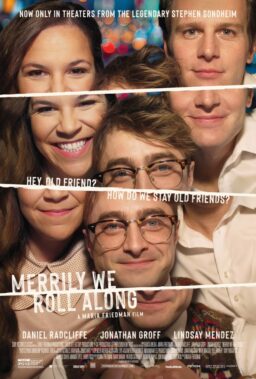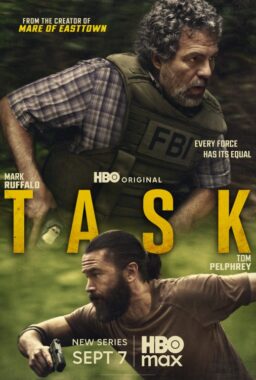Apart from its majestic architecture and breathtaking natural landscape, what makes Reykjavík one of the most photogenic cities on the planet is the way in which its buildings and statues frame the sky. There are no clusters of skyscrapers to obscure the spectacular cloud formations made all the more luminous by a rising or setting sun. It’s difficult to dismiss the importance of preserving one’s environment when it is consistently overwhelming your senses, and not a moment goes by during my walks in town that I don’t feel humbled by the beauty hovering above my head. Bulgarian filmmaker Milko Lazarov’s “Ága” conjures a similar sense of awe with its neorealistic portrait of an elderly couple living in Siberia’s arctic tundra. Until its story starts to kick into gear, the film had me believing that it was a documentary not unlike Robert J. Flaherty’s 1922 landmark “Nanook of the North,” complete with staged scenarios designed to capture aspects of the family’s daily routine. It’s no coincidence that the husband’s name is Nanook, played so authentically by Mikhail Aprosimov that you’d swear he’s lived forever in the “yurt” (nomadic tent) occupied by his character. Sharing the space with him is Sedna (an equally endearing Feodosia Ivanova), his devoted wife named after an Eskimo goddess. She seems almost ethereal in the film’s opening shot as she strums a remarkably complex tune on her mouth harp, an ancient instrument representative of her tribal culture.
This extended take sets the tone and flow of the picture, which moves at the deliberate pace of the couple’s lives with such an unobtrusive gaze, we feel as if we are invisible spirits basking in their presence. When Sedna applies lotion to Nanook’s legs, the camera remains fixed on an empty corner of their yurt, as if to maintain their privacy. “Legs are like family,” Nanook quips, “You can’t do one without the other.” Only gradually do we learn that the film is named after the couple’s estranged daughter, who left home to work in a diamond mine after failing to earn the approval of her parents. Nanook and Sedna aren’t portrayed as hard-nosed traditionalists so much as old souls comfortably set in their ways. Their lifestyle may be frozen in time, but the spread of inescapable change has begun to catch up with them, as evidenced by the increasingly warm climate and watery ice. “It’s normal,” Sedna reassures her husband, opting to remain in denial as long as possible, while nursing a wound that has caused her health to deteriorate at roughly the same rate as the land itself. The sparse number of reindeer materializing on the horizon stand as a symbol of the family’s heritage that threatens to vanish from the earth. Immersive sound design is favored over music until a visit from their adult son, Chena (Sergei Egorov), who switches a portable radio to a classical music station. Nanook notes how a particular composition seems to have been written by someone who has dealt with a considerable amount of emotional anguish. As his character begins to face a mounting number of tragedies, the melodic sound of modern civilization starts to infiltrate the controlled silence of his psyche, causing him to orchestrate a long-overdue encounter punctuated by an operatic swell.
The fact that this culminating sequence is set in a cavernous hole resembling Siberia’s alarming permafrost craters enhances its poetic affirmation of an irrevocably altered world. It also mirrors a dream recounted by Sedna in which she was led below the earth to a place where fallen stars shimmered so brightly that they blinded her. This imagined tale is strikingly similar to the one had by a whale in German filmmaker David Jansen’s animated short, “Blau,” which the festival’s curators wisely selected to precede “Ága.” After enduring attacks by fisherman, sharks and pollution, the whale enters a bright cube hidden under the ocean’s depths that transports it to an alternate reality, allowing the weary mammal to fly though the air past cityscapes before resting peacefully on the beach. Like Sedna, the whale feels an urgent need to escape its circumstances, even if it means living within a fantasy. Jansen and Lazarov prove equally skilled at utilizing screen space to illustrate the immensity of a location, often containing a considerable amount of action in the corner of the frame. I sat in the front row for this double bill, and it proved to be an invigorating big screen experience.

One of the most buzzed-about titles at RIFF this year is Yann Gonzalez’s “Knife + Heart,” a cinephilic treat from France that concocts an oddly touching melodrama within the guise of a tongue-in-cheek thriller. My favorite movies tend to explore how our lives derive meaning from the parallel narratives we temporarily enter on a regular basis. The alternative realities in “Mulholland Dr.” and “It’s a Wonderful Life” serve a similar function to the cinema we consume, providing us with a startling perspective on what our lives could be, had we taken a different path. Film also provides us with a safe space to explore our darkest fears and desires, and few directors did this as memorably as Alfred Hitchcock. The violence of his obsessive lust for the actresses embodying his “cool blonde” archetype was directly expressed in “Psycho”’s violating shower scene, which is essentially a metaphor for rape, with the phallic knife penetrating its entrapped victim. Gonzalez’s film takes this concept a step further by featuring a killer whose weapon of choice is a dildo with a blade jutting through its tip, an ideal addition to the more irreverent section of the Icelandic Phallological Museum. There’s also a peephole fit for Norman Bates, not to mention a spirit animal taking the form of a malevolent bird, though the lead blonde, Anna (a sublime Vanessa Paradis), is anything but cool. As a director of genre-based gay porn, she isn’t prone to flinching at the sight of blood and genitalia, especially when they are both in frame.
Since inspiration for her films is derived from real-life events, scenes involving Anna are subsequently satirized by her porn doppelgänger (hilariously played by Nicolas Maury), whose exaggerated antics had the audience in such hysterics that the guy sitting next to me began choking on his popcorn. He lived, thankfully, but the same could not be said for many of Anna’s hired actors, as they are hunted down by a masked killer sharing the same first name as Farley Granger’s protagonist in Hitchcock’s “Strangers on a Train.” Not only does Granger’s black curly hair resemble that of the Gonzalez’s villain, his character was the yin to an unsettlingly similar yang embodied by Robert Walker’s sociopath. Paradis and the murderer in “Knife + Heart” also form a provocative Hitchcockian double, since both are wracked with volatile degrees of heartache. Being among the last students to use Bolex cameras in film school, I am well aware of the violence inherent in the old school editing process, where frames of film were sliced via razor blade. Gonzalez makes marvelous use of this imagery, while taking many visual cues from one of Hitchcock’s most impassioned scholars, Brian De Palma. During a Q&A following the screening, Gonzalez dubbed De Palma “the most emotional director of all time,” praising his 1976 masterwork, “Carrie,” as a melodrama, first and foremost. On that level, “Knife + Heart” succeeds much more than it does as a horror film. Despite its lurid plot, the gore and nudity aren’t all that graphic, while the killings themselves amount to an aesthetic exercise embracing vintage artifice (a sudden rainstorm taking place offset is no less phony than any scenario staged by Anna). As unlikely as it might sound, this film would actually make a fine triple bill with “Blau” and “Ága,” all of which are linked by tormented characters transported through a rabbit hole into the upside down realm of a surrogate existence.
Editor’s Note: All post-screening Q&A’s at RIFF take place only after the entirety of the end credit roll has completed. I find this infinitely preferable to the talkbacks that occur in America immediately after the final fade to black. Sitting through the credits provides you with more time to come up with a decent question for the filmmaker in attendance, while giving you the chance to savor the music selected to stick with viewers as they leave the theater. Audiences are advised to stay seated at least through the midway point of “Knife + Heart”’s end credits, since there is a crucial scene embedded at the center of them—and no, it doesn’t involve Thanos.












